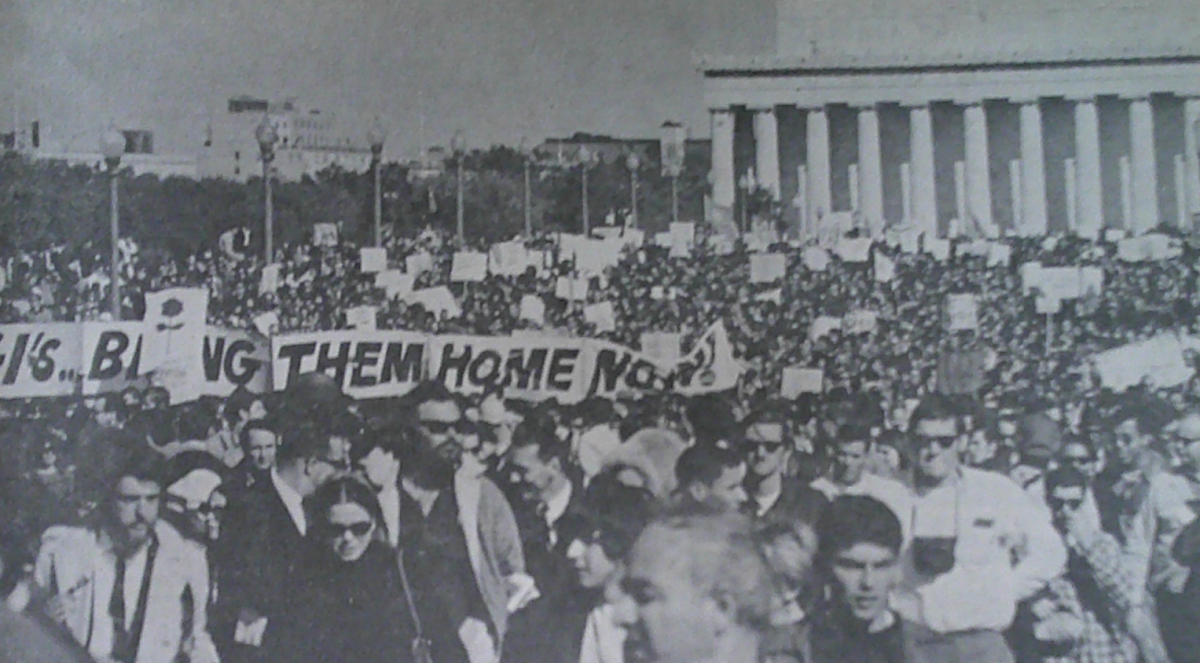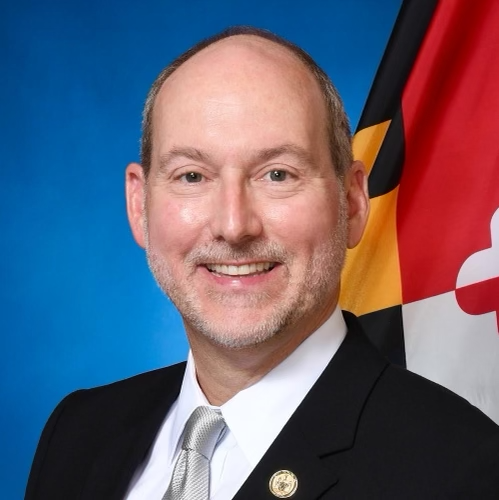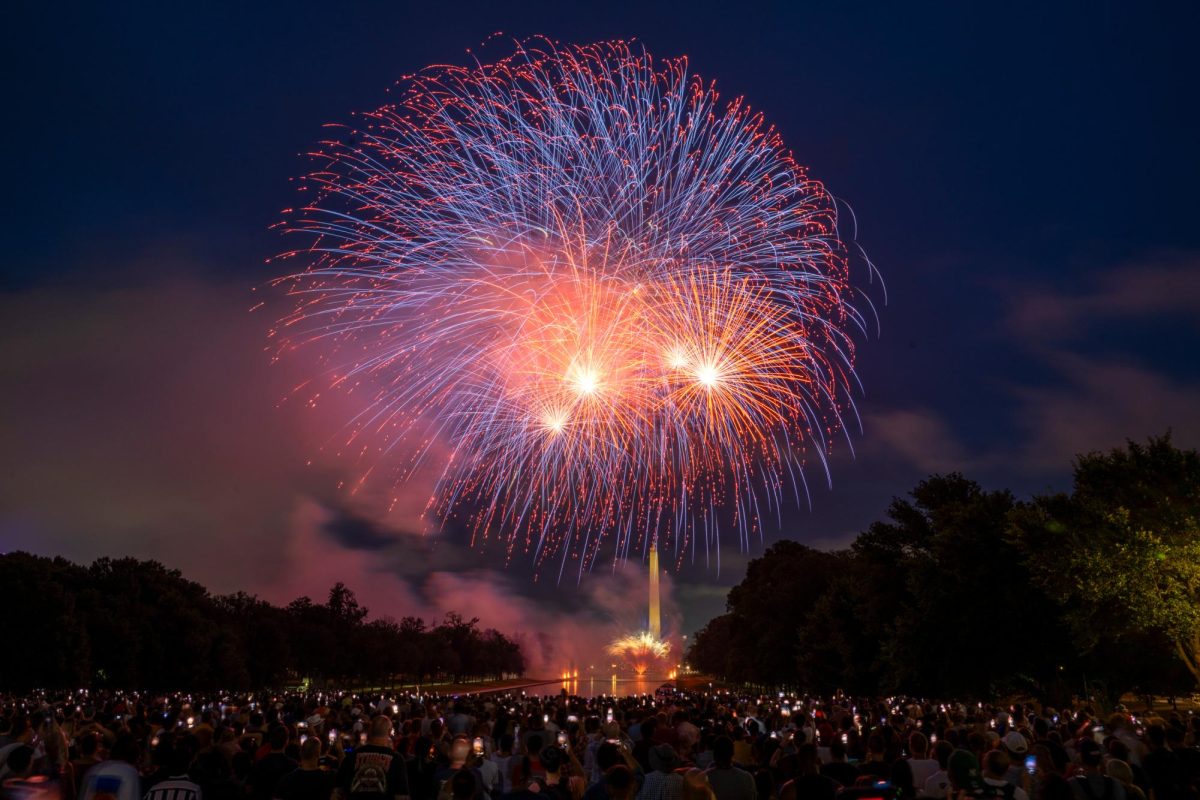Since Thursday, pro-Palestinian demonstrators have occupied University Yard to protest the war in Gaza. This is far from the first time anti-war protests have swept through GW.
Within the pages of more than 100 dusty, leather-bound ledgers of The Hatchet’s archives lies coverage of student protests against wars and conflicts dating back to the 1960s. Glimpses of photographs and reporting across 60 years of demonstrations on GW’s campus reveals parallels in the scenes of the U-Yard encampment and other protests at the University.
Students rally across time and the District



A revolution is only as strong as its revolutionaries, a mantra GW students have embodied since the 1960s. From left to right: GW students and other protesters gather against the Vietnam War on Oct. 24, 1967, the Iraq War on Jan. 19, 2003, and the war in Gaza on April 28, 2024.
See more below:
“Thousands of anti-war protestors march across Memorial Bridge on their way to the Pentagon to demonstrate against the Vietnam war.” – Oct. 24, 1967, edition of The Hatchet (Brechner)
“‘I think what we’re doing here is really important,’ junior Hannah Clark said. ‘People are getting together on their own campuses, and then coming down here to Washington to protest.'” – Michael Barnett and Zach Ahmad, Jan. 21, 2003, edition of The Hatchet (Andrew Snow)

“Demonstrators inside the U-Yard encampment began synchronized clapping at about 11 a.m. while gathered in a circle at the center of the encampment. Some are sat in lawn chairs while some rest on the ground and others stand.” – April 28, 2024, Hatchet coverage (Lexi Critchett)
Students tear down their own walls, administration’s barriers




Thirty years after students built and tore down a replica of the Berlin Wall in U-Yard to celebrate the fall of the real version, University officials erected a new barrier. Students still knocked it down. On the farthest left, students commemorate the fall of the Berlin Wall and the end of the Cold War in November 1990. Next, a barrier that officials put up to confine the pro-Palestinian encampment in U-Yard prevented demonstrators from moving in and out of the space. Following, a student knocks down the fake Berlin Wall in U-Yard in November 1990. On the farthest right, a student hoists a portion of the barricade aside, while heading into U-Yard.
See more below:
“A replica of the Berlin Wall rose and fell in a span of three hours on the University Yard last Friday. The wall was built and torn down to commemorate the anniversary of the destruction of the Berlin Wall.” – Karmela Lejarde, Nov. 12, 1990, edition of the Hatchet (Jeremy Azif)
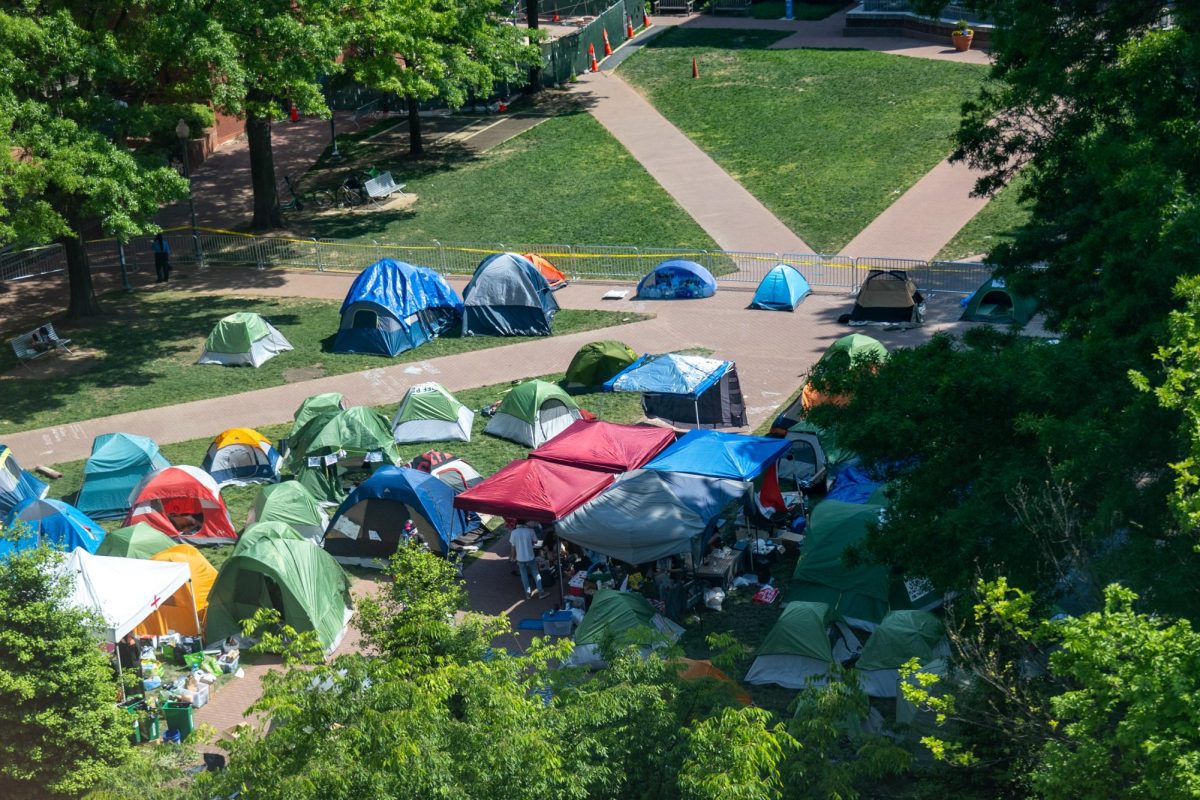
“Officials tightened the barricades in U-Yard Saturday morning, splitting access to the plaza in half and cutting off access to Bell and Lisner halls and GW Law.” – April 28, 2024, Hatchet coverage (Daniel Heuer)
“The wall’s historic demise is a year old now, and last Friday the Freedom Day 1990 committee at GW commemorated that powerful event with Freedom Day 1990 on the University Yard. The committee constructed a 150-foot replica of the Berlin Wall from cardboard boxes and then let passersby graffiti the creation with various slogans.” – Ali Sacash, Nov. 12, 1990 (Jeremy Azif)

“The barricade fell at 11:28 pm and students rushed into the encampment. Students ran into the encampment. ‘Get on the line now!'” – April 28, 2024, Hatchet coverage (Raphael Kellner)
United arm-in-arm


Protesters at GW have united over more than a shared cause, many linking arms as a way to prevent themselves and others from being forcibly removed. On the left, student protesters against the war in Vietnam join hands on Nov. 5, 1968. On the right, faculty protesters against the war in Gaza join hands on April 25, 2024.
See more below:
“Chanting ‘We want peace,’ and ‘The streets belong to the people,’ the marchers began to cross Constitution Ave. at 18th St.” – B.D. Colen and Henry Ziegler, Nov. 8, 1968, edition of The Hatchet
“‘I need you guys to stay with me, I need students to stand as things happen, and our community to continue to show up because we cannot give up,’ an organizer said.” – April 25, 2024 Hatchet coverage (Daniel Heuer)
Students lead, faculty follow


When students gather in the streets to speak out against violence throughout history, professors have joined. On the left, professor Robert Jones argues after a talk in November 1968 from then-University President Lloyd Elliott on the campus unrest over the Vietnam War. On the right, Georgetown faculty form a circle around pro-Palestinian student protesters on April 25, 2024.
See more below:
“Professor Robert Jones joined in the heated discussion behind Monroe Friday afternoon following President Elliott’s first talk of the day.” – Nov. 14, 1968, edition of The Hatchet
“‘I’m here today, the same reason everybody else is because I’ve seen thousands of Palestinian children dead over the last six months, and it keeps on going, and I see my government funding it,’ [Melani McAlister, a GW professor of American studies and international affairs] said.” – April 25, 2024, Hatchet coverage (Daniel Heuer)
Officials walk on by


While professors unite with students for protests, top University officials have frequently walked through or avoided the protests entirely. On the left, a smiling former University President Lloyd Elliott, in October 1986, walked past a student protest calling for divestment from apartheid South Africa on his way to lunch. On the right, Provost Chris Bracey walks through protesters early April 29, 2024. University President Ellen Granberg has yet to attend the protest.
See more below:
“GW President Lloyd Elliott and other high-ranking GW officials encountered the group unexpectedly while on their way to lunch.” – Robert Mentzinger, Oct. 16, 1986, edition of The Hatchet (Zakim)
“Provost Chris Bracey, who initially was at the protest then returned about 30 minutes later with a to-go bag from Tatte Bakery & Cafe.” – April 25, 2024, Hatchet coverage (Daniel Heuer)
Sitting under a suspicious gaze


Throughout history, police tend to keep close tabs on GW protests. On the left, students organize a sit-in protest in 1968 at Rice Hall — which housed administrative offices and was razed in 2016 to create the structure that now houses the Campus Store — after discovering their planned Vietnam War protest was being tracked by D.C. police. On the right, police students sit outside U-Yard on April 26, 2024, during the protest against GW and U.S. involvement in the war in Gaza while being surveyed by D.C. police.
See more below:
“David Levin accused Elliott of ‘risking all over again’ the clash which took place Tuesday by remaining silent and not taking a stand until forced to do so. ‘I don’t ask you to support us,’ said Levin, ‘just say something.'” – Nov. 8, 1968, edition of The Hatchet

“The lights of MPD vehicles lit up the colorful chalk messages on the pavement, messages that included ‘Cops off our campus now,’ and ‘Free Palestine.'” – April 27, 2024, Hatchet coverage (Kaiden J. Yu)
“Money for tuition,” not war

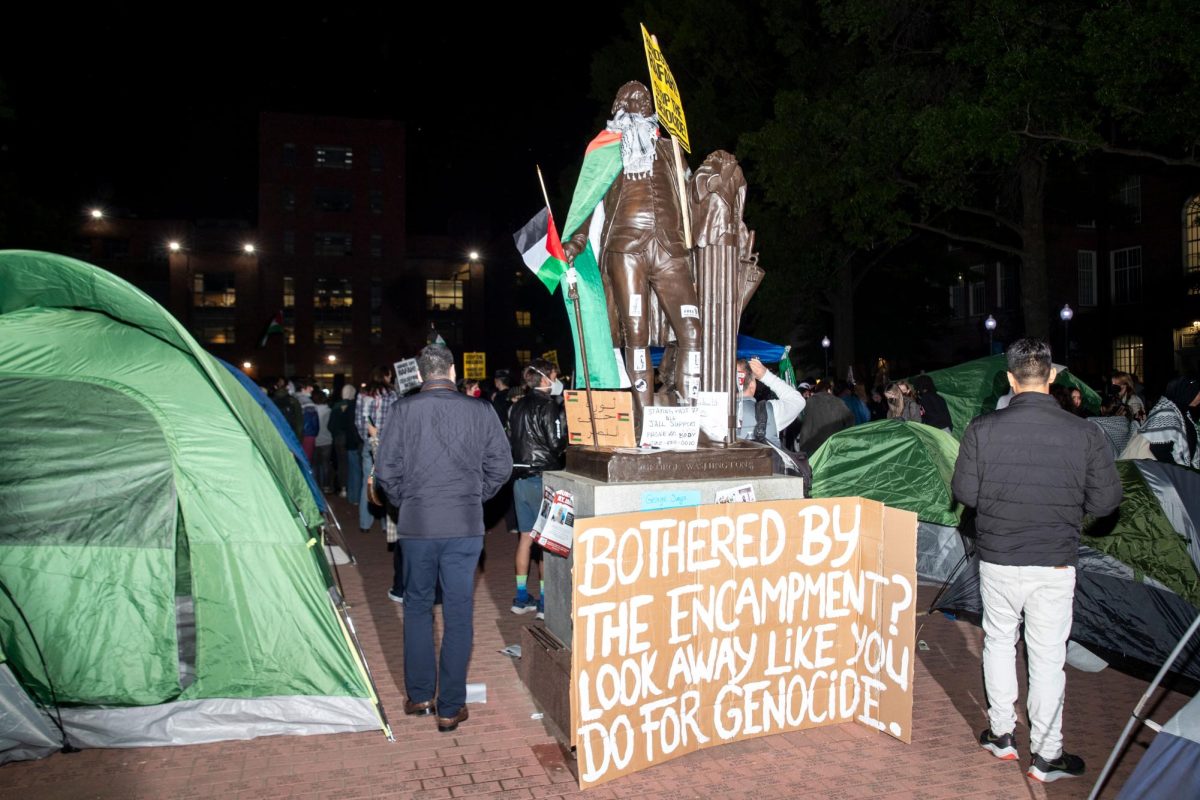
Three decades apart, students center on GW’s role in conflicts in the Middle East. On the left, student protesters in front of the White House in December 1990 call for less spending on the Gulf War and more on education. On the right, students put the onus on passing GW students to get involved in the protest calling for divestment from the Israeli government amid the war in Gaza on April 25, 2024.
See more below:
“‘Students should all be concerned with the war,’ [GW Progressive Student Union member] Brad Sagal said. ‘The money that goes (to Saudi Arabia) comes out of domestic spending budgets … and grants and loans for tuition are affected.'” – David Weber, Dec. 3, 1990, edition of The Hatchet (Jeremy Azif)

“Protesters have formed a ring around the encampments in U-Yard, with demonstrators belting chants like ‘Long live the intifada,’ ‘MPD, KKK, [Israeli Occupying Force] are all the same,’ ‘Free Palestine’ and ‘GWU, you can’t hide, you invest in genocide,'” – April 25, 2024, Hatchet coverage (Sage Russell)


